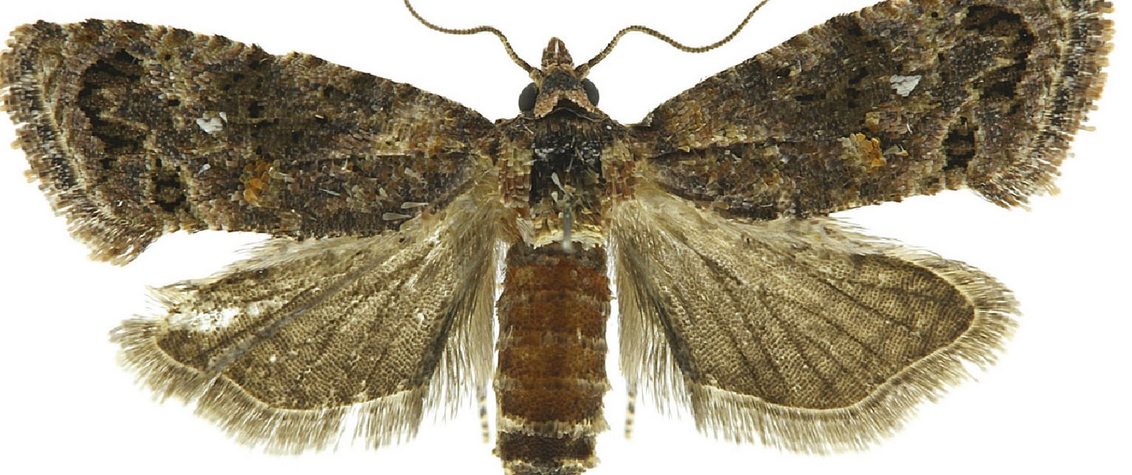Pest Alert: False Codling Moth
The cut flower industry, one of Kenya’s most important sectors, earns the country around $0.5 billion annually. Production of cut flowers is, however, constrained by insect pests and diseases among other factors resulting in yield loss and poor quality produce. Of the pest challenges currently facing flower producers in Kenya is the false codling moth (FCM), Thaumatotibia leucotreta, which is categorized as a quarantine pest by the European and Mediterranean Plant Protection Organization (EPPO). Growers have suffered financial losses due to quarantine restrictions imposed on exporting countries and detection of a single larva can result in rejection of an entire consignment.

False codling moth is native to sub-Saharan Africa and is a pest of economic importance to many crops. It is a key pest of citrus, pepper, avocado, macadamias, and cotton. Previously, there were no known reports of FCM being a pest of roses until its larvae was detected several times by the National Plant Protection Organization of the Netherlands (NPPO) in buds of Rosa cut flowers originating from countries where the pest is present. Different studies and trials conducted in Kenya by several researchers has shown that FCM is widespread across the country with Kirinyaga, Murang’a, parts of Kiambu and Nakuru, Machakos and Kajiado counties recording high prevalence rates.

False codling moth is a multivoltine pest which does not enter diapause leading to year-round overlapping generations on host plants. FCM has 2-5 generations annually in natural conditions. The life cycle of the false codling moth includes egg, 5 larval instars, pupa and adult. The complete life cycle takes between 30 to 174 days depending on environmental factors such as temperature, humidity, food availability and quality and photoperiod, with 25°C being optimum.
Mated female moths fly at night, depositing eggs singly or in bunches on flower buds. At an optimum temperature of 25°C, females can lay three to eight eggs per flower bud and up to 800 over her life span. The hatched larvae penetrate making burrows about 1 mm in diameter and feed inside the flower bud. Mature larvae exit the flower bud, then drop to the ground on silken threads to pupate in the soil or within plant debris. After a few days, the pre-pupae turn into pupae, remaining as such in the soil till they emerge as adult moths.
FCM larvae are difficult to detect once they are inside the flower bud, and the singly laid eggs are difficult to detect as well. Thus, it is desirable to use the yellow delta traps baited with a pheromone lure to monitor the extent and densities of this invasive moth pest. Visual inspection of plants involves looking out for signs of poor growth or rot; holes in flowers; adults hidden in foliage; and crawling larvae. Once the flower is damaged, it becomes vulnerable to fungal organisms that causes rots. Infestations can be identified by the brown spots and dark brown frass.
Current control of FCM in ornamentals consists of chemical application (Karate Zeon & Match), mating disruption using pheromones and biological control methods, although cultural control practices including field sanitation, removal and destruction of infested flower buds remains an important foundation for all FCM control options. Additionally, the level of control achieved is therefore the sum of the efficacy of all the measures used, denoting that even if efficacy with a single measure is sub-optimal, when several measures are used in combination through the course of one season, levels of FCM control may well exceed 95%.